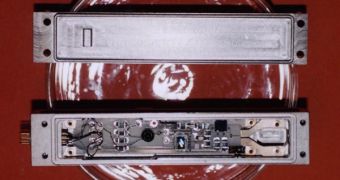Superconductivity is a phenomenon occurring in certain materials at extremely low temperatures, characterized by exactly zero electrical resistance and the exclusion of the interior magnetic field. They are thought to appear usually below -140 degrees Celsius. Superconductors are used in many applications, like MRI medical imaging scanners, levitating trains and power lines.
A group of researchers in the Netherlands created the smallest version of a superconducting device, that can measure the faintest magnetic fields. Superconductivity occurs in a wide variety of materials, including simple elements like tin and aluminium, various metallic alloys and some heavily-doped semiconductors. It does not occur in noble metals like gold and silver, nor in most ferromagnetic metals.
The device is called SQUID (superconducting quantum interference device), it's extremely sensitive to the minute magnetic fields and it's made of a loop of superconducting metal with two junctions. This junction works as an obstacle to superconducting current, called "supercurrent" that flows through the loop, an effect closely related to the magnetic field of the loop. Measuring the nearby magnetic field is actually a simple process of observing the current.
The device is used to make Scanning SQUID microscopes (SSMs) that work by running a small SQUID over a sample to build up an image of its magnetic properties. These can be used to investigate the properties of micro-electronics and measure the tiny magnetic fields produced by living cells.
"Making SQUIDs smaller makes it possible to increase the resolution," says Aico Troeman, of the Mesa+ Institute for Nanotechnology, part of the University of Twente in the Netherlands. Being only 180 nanometers in diameter, this is by far the smallest device currently out there."
The extreme sensitivity of SQUIDs makes them ideal for studies in biology. Magnetoencephalography (MEG), for example, uses measurements from an array of SQUIDs to make inferences about neural activity inside brains.

 14 DAY TRIAL //
14 DAY TRIAL //